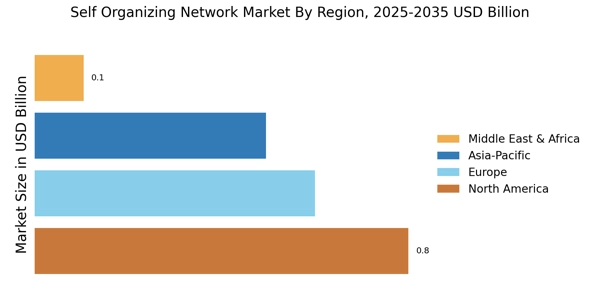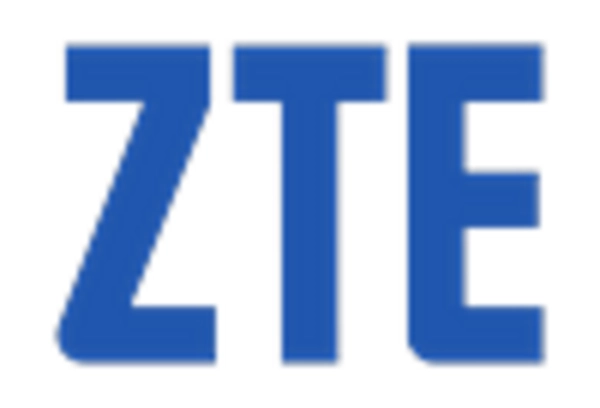The Self Organizing Network Market (SON) Market is currently characterized by a dynamic competitive landscape, driven by the increasing demand for automation and efficiency in network management. Key players such as Ericsson (SE), Nokia (FI), and Huawei (CN) are at the forefront, each adopting distinct strategies to enhance their market positioning. Ericsson (SE) focuses on innovation through its advanced AI-driven solutions, aiming to streamline network operations and improve service quality. Meanwhile, Nokia (FI) emphasizes partnerships and collaborations, particularly in the realm of 5G technology, to expand its global footprint. Huawei (CN), on the other hand, leverages its extensive R&D capabilities to develop cutting-edge SON solutions, thereby reinforcing its competitive edge in emerging markets. Collectively, these strategies not only shape the competitive environment but also indicate a trend towards greater technological integration and collaboration among industry leaders.
In terms of business tactics, companies are increasingly localizing manufacturing and optimizing supply chains to enhance operational efficiency. The market structure appears moderately fragmented, with several players vying for dominance while also collaborating on various initiatives. This collective influence of key players fosters a competitive atmosphere that encourages innovation and responsiveness to market demands.
In August 2025, Ericsson (SE) announced a strategic partnership with a leading telecommunications provider in Asia to deploy its latest SON technology, which is expected to enhance network performance and reduce operational costs. This move underscores Ericsson's commitment to expanding its presence in high-growth regions and highlights the importance of strategic alliances in driving technological advancements. The partnership is likely to facilitate the rapid adoption of SON solutions, thereby positioning Ericsson favorably in the competitive landscape.
In September 2025, Nokia (FI) launched a new suite of SON applications designed to optimize network management for 5G networks. This initiative reflects Nokia's focus on innovation and its intent to address the complexities associated with next-generation networks. By enhancing its product offerings, Nokia aims to solidify its market position and cater to the evolving needs of telecommunications operators, which may lead to increased market share.
In October 2025, Huawei (CN) unveiled a new AI-powered SON platform that promises to revolutionize network automation. This development is particularly significant as it aligns with the growing trend of integrating artificial intelligence into network management. Huawei's investment in AI technology not only enhances its product portfolio but also positions the company as a leader in the digital transformation of network operations, potentially attracting new clients seeking advanced solutions.
As of October 2025, the competitive trends within the SON market are increasingly defined by digitalization, sustainability, and the integration of AI technologies. Strategic alliances among key players are shaping the current landscape, fostering innovation and collaboration. Looking ahead, it is anticipated that competitive differentiation will evolve, with a shift from traditional price-based competition to a focus on innovation, technological advancements, and supply chain reliability. This transition may redefine how companies position themselves in the market, emphasizing the importance of agility and responsiveness to emerging trends.


















Leave a Comment